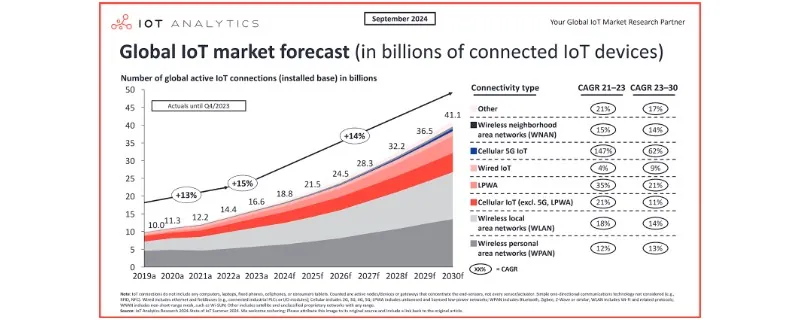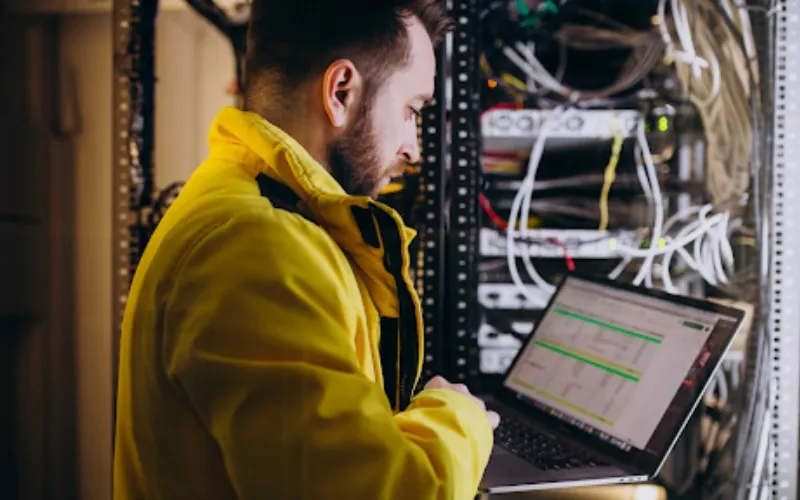Cloud computing and the Internet of Things (IoT) are very different technologies that are already part of our lives. Their adoption and usage are expected to become more widespread, making them critical components of the Internet of the future.
What is cloud computing in iot?
Cloud computing is a powerful system of computers (servers) that store and process data instead of your phone, computer, or other devices. When multiple devices collect and transmit information, they need a place to store and use this data. This is where the cloud comes in. Let’s consider an example of what is cloud computing in IoT.
Imagine your smart fridge sends data to the cloud about its temperature, the number of items inside, etc. This data can be analyzed in the cloud to notify you when you need to buy more milk or orange juice. The same applies to your morning coffee maker, as an example of cloud software engineering provided by Lemberg Solution. Schools, hospitals, and other enterprises can significantly benefit from cloud computing in IoT.
Cloud computing in IoT serves several essential functions: data storage and processing, analytics and machine learning, connected device management, and security. Let’s explore these further.
Key benefits of cloud computing for IoT solutions
Looking more closely, what is the role of cloud computing in IoT?
1. Easy access to data. Cloud services provide access to and remote control of data from anywhere in the world, allowing companies to easily integrate CRM systems or, for instance, mobile applications and provide seamless management.
2. Scalability. Cloud computing in IoT allows for the better and faster scalability of resources based on business needs and the number of devices and data. Resources can also be reduced as needed.
3. Cost reduction. With cloud services, you save on purchasing and maintaining hardware by accessing computing resources only on demand.
4. Fast analysis and big data processing. Cloud computing enables IoT projects to focus on the fast analysis and processing of large amounts of data, improving operational processes’ efficiency.
5. Flexibility and quick implementation. There’s no need to set up a separate infrastructure for data storage, since cloud platforms reduce the time and costs of implementing IoT solutions. You can also access the cloud to check the security system at home from any device or location on the planet.
6. Security. Thanks to advanced encryption technologies, cloud computing reliably protects data.
What is the role of cloud computing in IoT
Cloud computing is essentially the “control centre” for all your devices at home or work. It stores data, processes it, and enables devices to interact with each other. For instance, in a “smart” home, you can set up automatic heating shutoff if cameras detect no one in the house, prepare your morning coffee when you wake up, or simultaneously monitor all patients’ conditions in a “smart” hospital.
Cloud data is accessible remotely, and its transmission is quick and uninterrupted, which is vital for business or critical infrastructure enterprises.
Speed and scale are two important aspects of cloud computing that work harmoniously with IoT networks and mobility. Thus, users can benefit more by combining cloud computing with the Internet of Things. Undoubtedly, some factors indicate that the cloud is essential for the success of IoT. IoT players can leverage the power of remote data centres through cloud computing without requiring local hardware and software. Cloud computing for IoT is the best option financially since users only pay for what they use, saving significant upfront costs. It helps companies launch large-scale IoT projects easily, removing many entry barriers to the market for most IoT-based organizations.
Future trends: cloud computing and IoT integration
The number of connected IoT devices is projected to reach 40 billion by 2030. According to IoT Analytics’ State of IoT Summer 2024 report, which spans 171 pages, there were 16.6 billion connected IoT devices by the end of 2023, marking a 15% increase from 2022.

The role of cloud computing in IoT is expected to involve even closer integration, thanks to new technologies such as 5G and Edge Computing. Simply put, this means that data will be processed even faster, enabling almost instant response to changes. For example, when driver-less vehicles become more common, they will exchange data about weather conditions, traffic jams, movement, accidents, roadwork etc., via the cloud, helping optimize time and safety on the road.
It’s also noteworthy that cloud computing will become increasingly popular due to its ability to ensure continuous business processes during emergencies and quick recovery. Companies can avoid losing money and time and maintain constant access to the system.
We should also remember the rapid development of artificial intelligence and its impact on cloud computing and IoT integration. AI effectively manages data, improves computing power, and reduces costs. There has already been a surge in demand for machines with ample RAM or storage. Furthermore, as AI models develop, cloud-based machines that heavily rely on GPUs are needed. We will achieve even more synergy between cloud computing and AI in the future, leading to more complex and cost-effective solutions.
The global serverless computing market is projected to grow by 20.8% from 2022 to 2028. Serverless computing allows customers to quickly create applications without managing IT infrastructure. “Serverless” does not mean no servers; it helps developers run applications without interacting with physical servers. Companies can pay only for the cloud resources they require.
IoT has the capacity to change fundamentally how businesses operate. By migrating this technology to the cloud, organizations can more swiftly realize their objectives and aspirations. It’s crucial to understand that transitioning IoT to the cloud isn’t merely a single action but an ongoing, iterative journey. As more providers specializing in IoT cloud services emerge in the next few years, we expect to witness the development of innovative and intriguing facets of IoT cloud computing. It’s worth noting that cloud computing elevates IoT systems by adding enhancements such as improved reliability, increased accessibility, better connectivity, and seamless integration.


